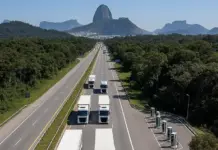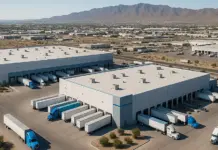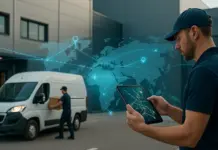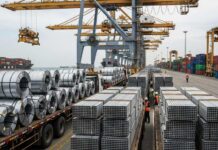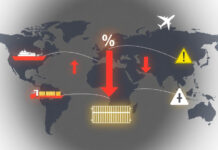India’s Micro, Small, and Medium Enterprises (MSMEs) have untapped potential to boost the country’s economy as international trade patterns change. These small and medium-sized businesses, which are sometimes called the “backbone” of the economy, make up roughly 30% of India’s GDP and are responsible for almost half of its exports. Most MSMEs, on the other hand, are cut off from worldwide supply chains because they don’t have enough infrastructure, can’t take advantage of economies of scale, and are subject to too many rules.
India has to rethink industrial parks—not as sites with buildings, but as strategic ecosystems that help small businesses grow, connect, and compete on a global scale. Industrial parks have been around for a long time, but the world has changed so much that we need to completely rethink how they are thought of, controlled, and built into national and global supply chains.
Thinking about industrial parks in the era of globalisation
People don’t only regard industrial parks for the space they provide; they also value the ecosystems they help create. MSMEs can’t get good inputs, skilled workers, contemporary logistics, or regulatory frameworks if they are on their own. But when companies are part of a larger ecosystem including exporters, suppliers, researchers, regulators, and logistical partners, they have a chance to grow beyond what they could do on their own. These parks may help speed up new ideas, improve quality, and save costs. They may turn MSMEs from local suppliers who don’t do much into global players who do a lot.
This isn’t a made-up dream. China has proved this in places like Shenzhen, where small and medium-sized businesses prospered because they were strategically located next to anchor industries, export facilitators, and high-end infrastructure. Shenzhen did well not because of where it is, but because of its planned policies and ecosystem growth.
India has also had times when it was successful like this. When MSMEs were given access to shared resources, worldwide customers, and clear rules, the Tiruppur clothing system, Surat’s diamond cluster, and Noida’s electronics manufacturing clusters all grew. These are not one-of-a-kind examples; they are early models of what industrial parks may achieve on a large scale.
One of the biggest problems Indian MSMEs face right now is following the rules. When you compete in the global market, you have to follow strict rules on product quality, sustainability, labour laws, and data privacy. For a tiny facility, it would be a lot of work to meet them. This is a fair playing field where quality, not size, decides who may be involved in global activities.
Also, the parks may be utilised as physical gateways to global markets by combining logistics and customs services. On-site customs counters, air freight terminals and port links that speed up turnaround times and make it easier to export have helped a number of successful models in other places. India’s MSMEs have a unique potential to fill the gap as the global value chain becomes more fragmented and businesses try to reduce risk in areas that are excessively concentrated. Industrial parks that specialise on a certain industry and are export-oriented might connect overseas demand with local supply.
A missed chance or a moment of manufacturing
But this vision can only come true if India moves from making promises to doing action. The future seems bright for programs like PM Gati Shakti, the MSME Cluster Development Program, and the State Industrial Corridor projects. But the speed of execution must match the urgency of the opportunity. Using 20th-century red tape to create 21st-century parks would simply make the gap between potential and policy worse.
Giving MSMEs more leverage isn’t only about giving them money or credit guarantees. It’s about creating places where tiny firms may dream large without worrying about running into problems with rules or infrastructure. If built as smart, interconnected, and export-ready ecosystems, industrial parks may be the runways that help MSMEs take off—not only for national development, but for global leadership as well.
India doesn’t need to start over with its MSMEs. It just needs to finally give them the chance they deserve.


